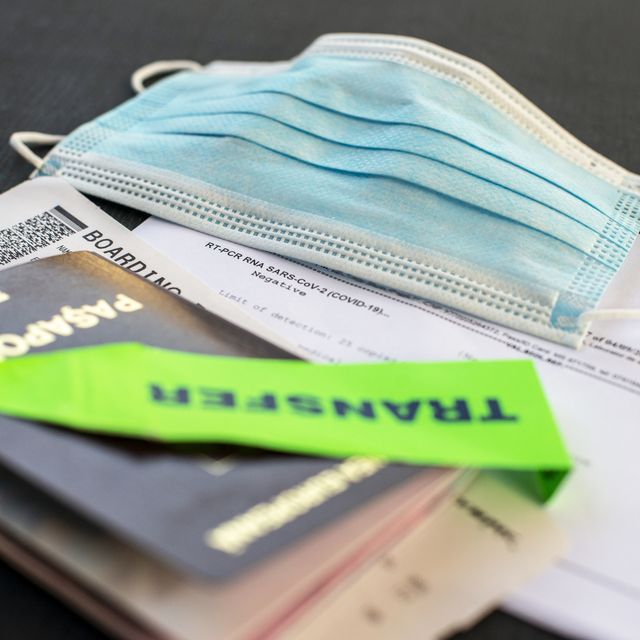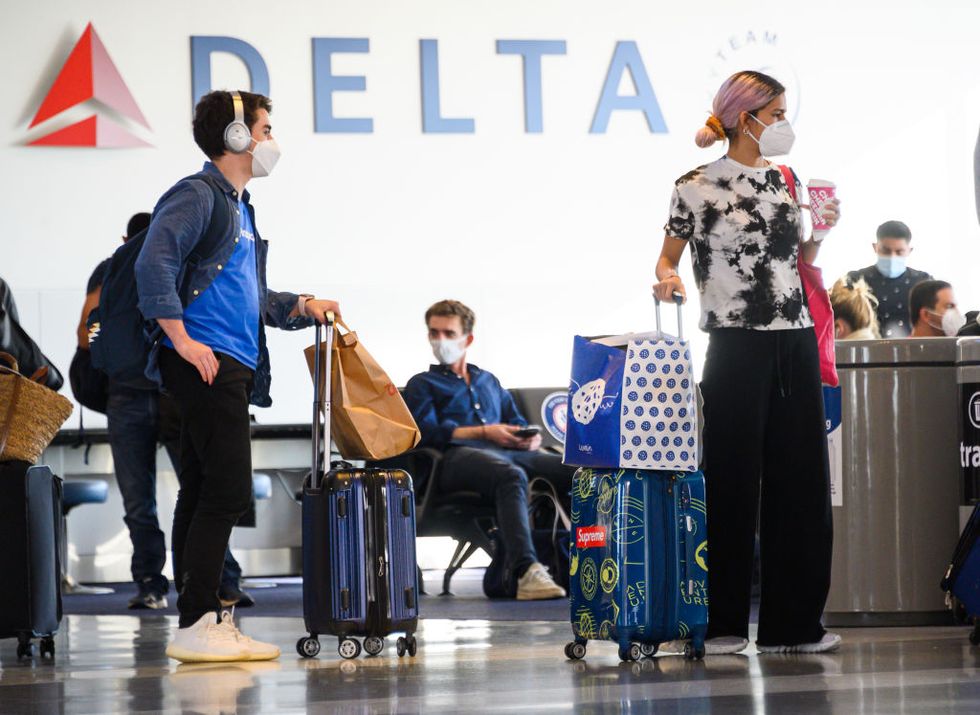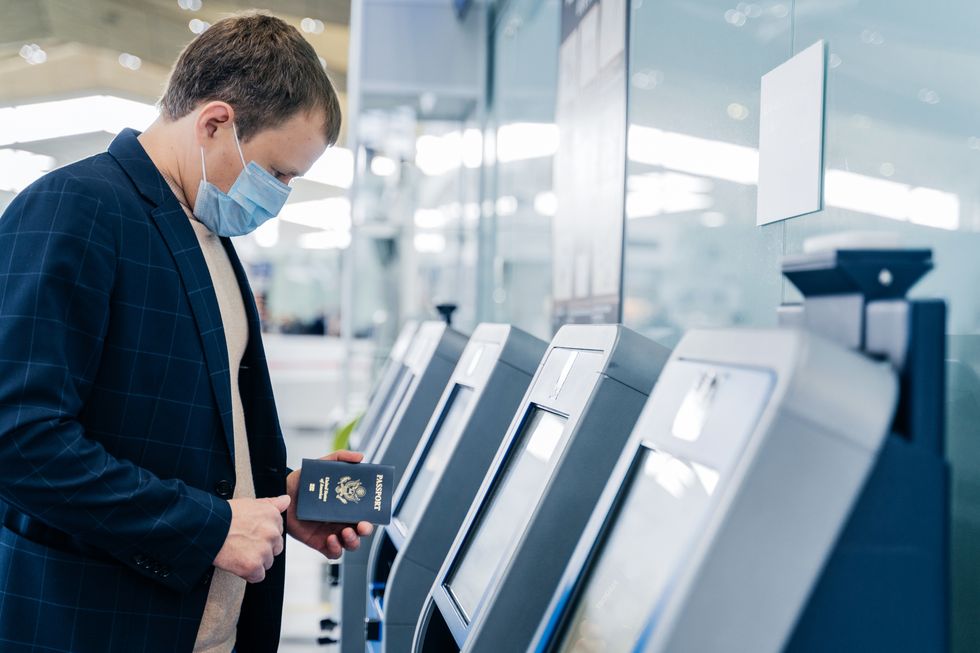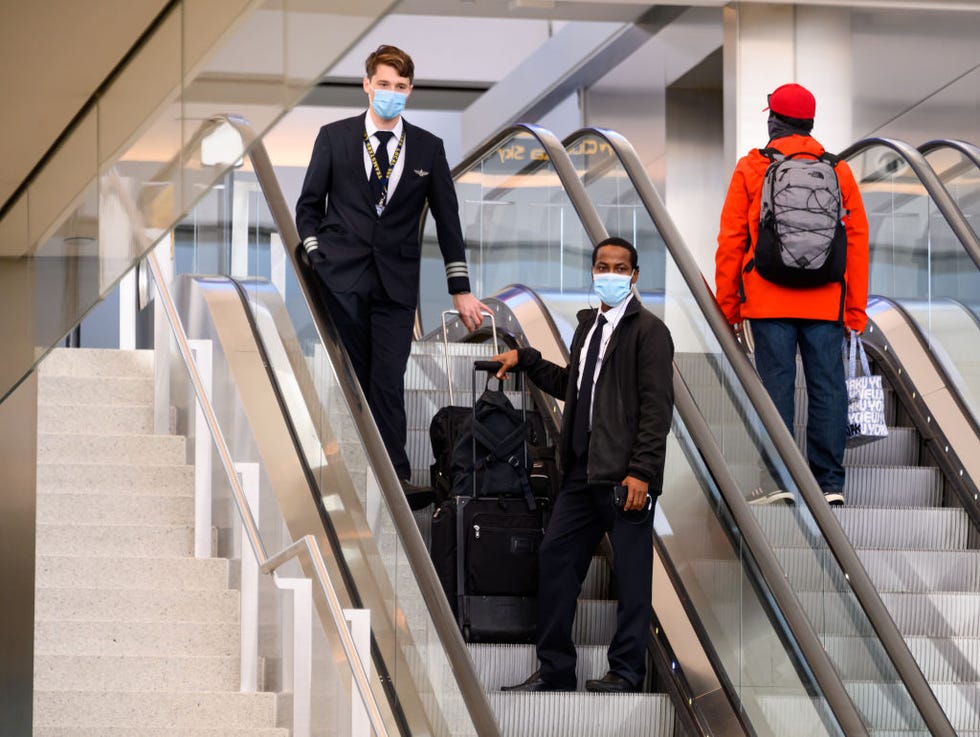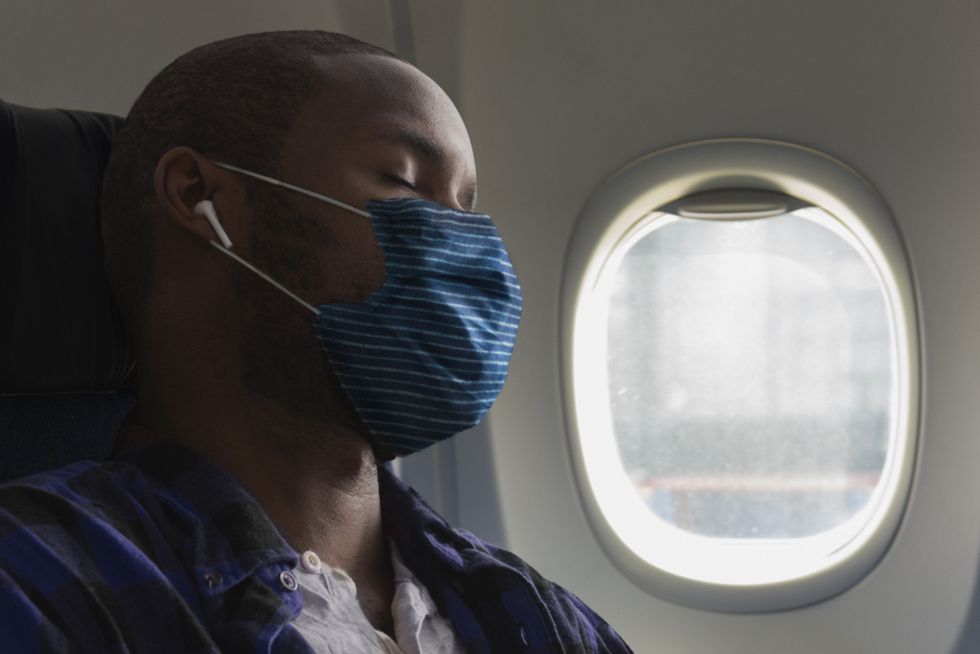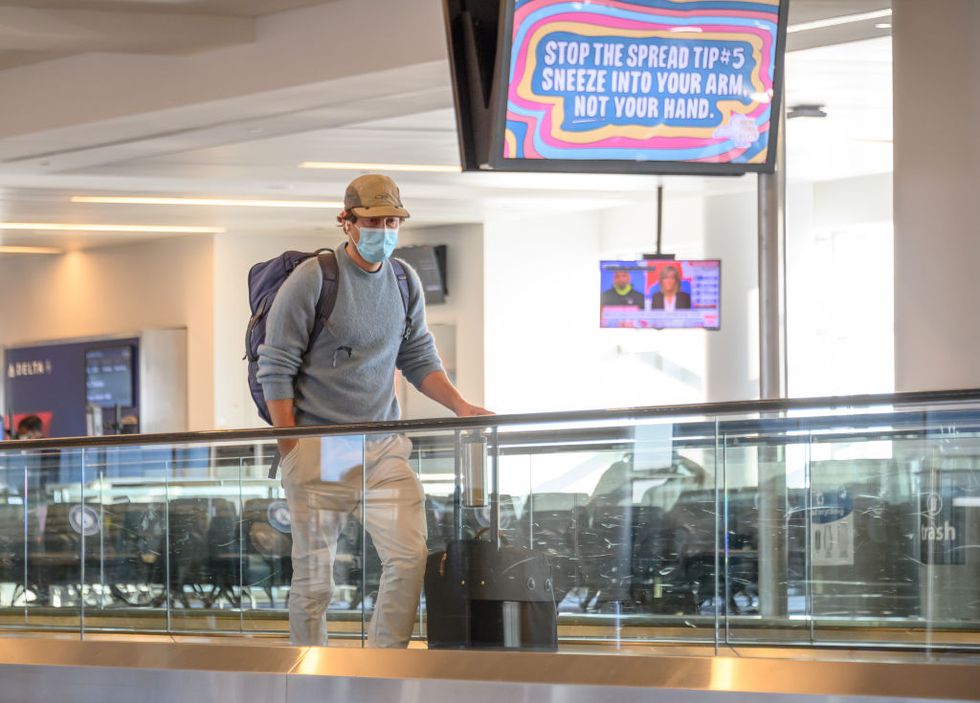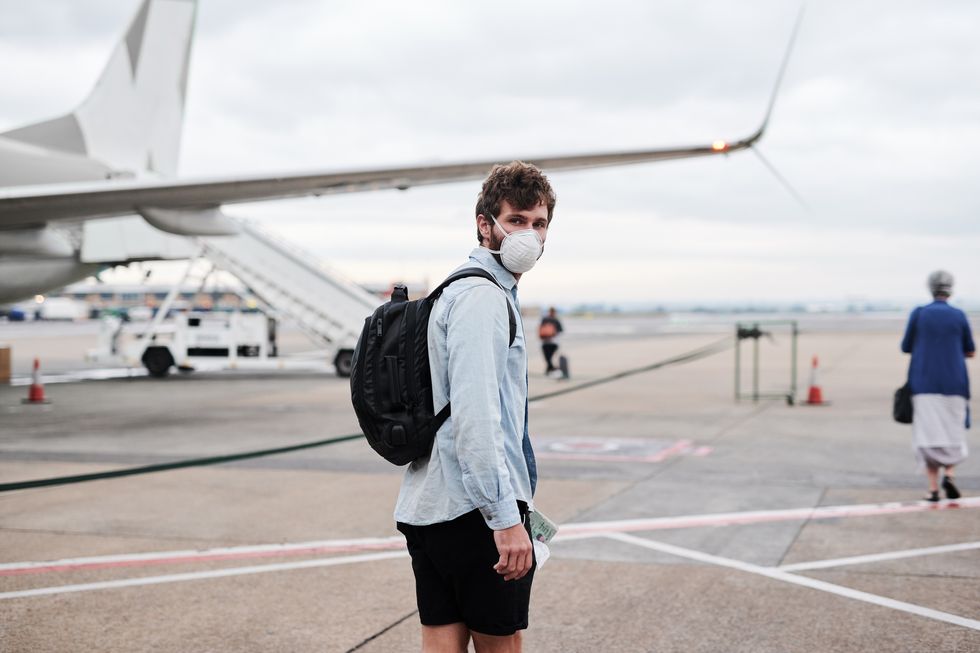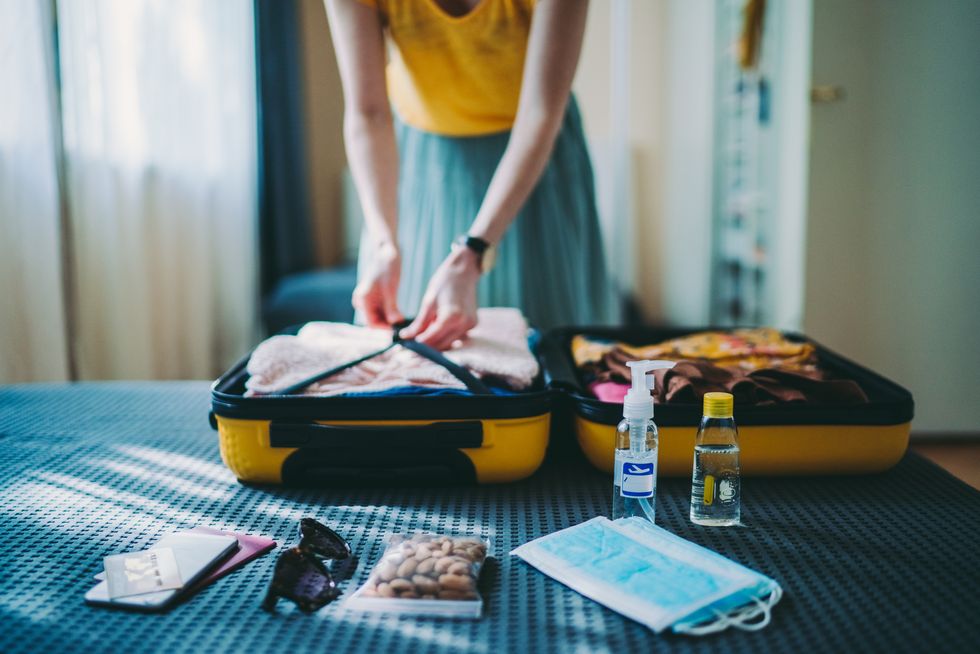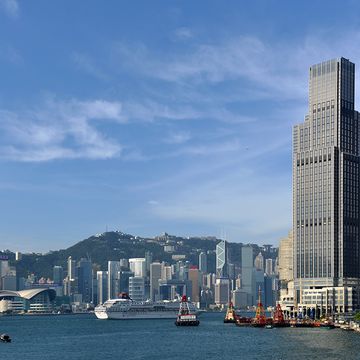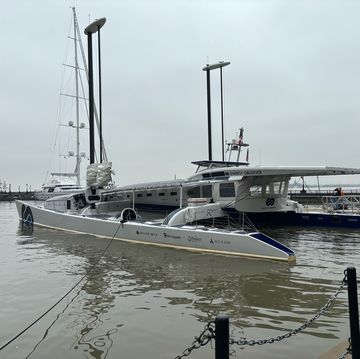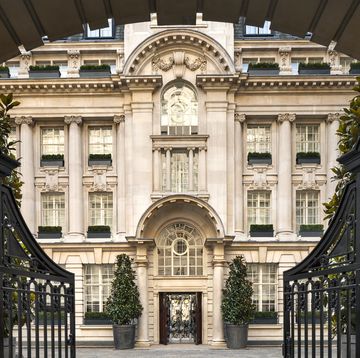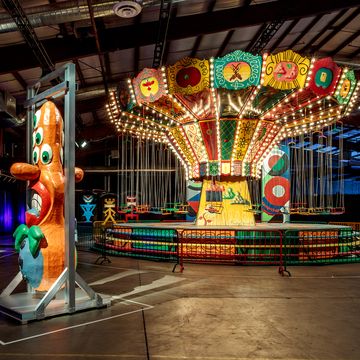The world is divided these pandemic days between those who are traveling by plane and those who are not. There are distinctly more of the latter: As of early November, fear of infection brought US domestic air traffic down 60 percent compared to the same period in 2019. International air travel to and from the U.S. has fared even worse, down by as much as 90 percent, even in the peak summer months.
Despite that stunning drop, more than a half-million U.S. passengers have passed through airport checkpoints every day in recent months, according to the TSA. Yet they are not toying with their own and their loved ones' lives, health and industry experts maintain.
To be sure, throughout the pandemic, the Centers for Disease Control and Prevention (CDC) has been consistent in its advice to travelers: Don’t go—unless you must. “Staying home is the best way to protect yourself and others from Covid-19,” the agency says on its website.
Medical experts don’t dispute that: “Every time we step on an airplane, bus, or train, we are increasing the chances of infection, no matter how small,” says Dr. David Aronoff, director of infectious diseases at Vanderbilt University Medical Center.
But there is another point upon which the CDC and the medical community agree, Aronoff points out: that the chances of transmission of the coronavirus on an airplane are low. The reason is twofold: the advanced ventilation systems onboard most planes and a slew of protocols, from mask mandates to stepped-up hygiene measures.
One sure indicator of airlines’ confidence that their health and sanitation protocols are effective is that the comeback of long-haul flights—anathema for months—is under discussion. Certain airlines, including Qantas and Air New Zealand, continue to ground most of their longest flights until next year; but others have recently announced that they are returning their super-jumbos to the skies and are gradually reviving their pre-Covid schedules. Among them are Singapore Airlines, which on November 9 resumed the world’s longest non-stop flight—its nearly 19-hour slog between New York and Singapore’s Changi Airport hub—and Emirates, which has restored flights to many of its U.S. gateways and will resume its longest flight, Dubai to Auckland (around 17 hours nonstop), in January.
It isn’t just the airlines that are trying to round the corner. Even before the recent encouraging news from Pfizer that an effective vaccine may arrive sooner than expected, more people were considering flying. The OAG (Official Airline Guides), the global travel data provider headquartered in the UK, recently conducted a survey of 4,000 users of its flight-tracking app, revealing that 81% of North American travelers plan to take a domestic flight sometime in the next six months, and 73% of them also intend to travel internationally. “Most consumers are prepared to fly under the right circumstances,” says John Grant, OAG’s chief analyst.
Virtuoso, the consortium of travel advisors, recently conducted a survey of 100 well-traveled clients of its member agents, with similar results: 72% were “ready to travel again,” reports Misty Belles, Virtuoso’s global director of public relations, and 67% said that they weren’t waiting until a vaccine became widely available. “Many of them have been reassured by the steps the airlines are taking,” says Belles, and more than half said they believed air travel was either “totally safe” or “safe, with basic precautions.”
“Health and safety,” Belles quips, “are the new loyalty.”
So what steps are airports and airlines taking?
Here is a rundown of the latest precautionary measures—and of the reasons why you are likely to be safer on an airplane than you might think.
Terminals: How clean and safe are they?
The notion of a sterilized airport might seem a stretch: It is an enclosed space through which thousands of passengers and employees troop every day, even during the pandemic.
Yet this is what I observed on a recent morning at JFK airport’s Terminal 4, where Delta Air Lines is a major tenant.
The terminal hummed with activity. To be sure, it was not pre-Covid activity. But travelers bound for Mexico and the Caribbean queued up at departure gates—masked and socially distanced by decals on the floor. Teams of cleaners armed with disinfectant hovered over self-serve kiosks—pouncing whenever a customer moved on. Plexiglass panes bristled atop the manned check-in counters. And you couldn’t walk a few feet without encountering one of those plus-sized hand sanitizer pumps.
“The focus is on clean along every single step of the journey,” says Stephanie Baldwin, vice president of operations for Delta at JFK, speaking about the protocols. Delta partnered in the early days of the pandemic with the Mayo Clinic and with Lysol brands to concoct a supercharged cleaning drill, taking into account all possible points of contact, from the drop-off curb to the airplane seat.
And since June, says Baldwin, Delta’s JFK operation has had only one confirmed case of Covid, involving one of the airline's employees (who isolated and has since recovered). While there have been cases among TSA workers nationwide—with 2,628 testing positive since the beginning of the pandemic—screeners are required to wear masks, shields, and, in general, airports are complying with the industry’s new “best practices.” Many fliers have noted that they’ve never seen terminals so clean, and airports are also taking additional steps, such as installing germ-killing ultra-violet lights over high touch areas like escalators.
Air quality aboard: How good is it?
One reason we haven’t been hearing about a rash of super-spreader flights is that airplanes are healthier environments than is commonly believed. The overarching reason? Their hospital-grade ventilation system, called HEPA (stands for High Efficiency Particulate Air). Several recent studies support this view, including one from Harvard’s T.H. Chan School of Public Health, and another from the Defense Department, but it was a fact, experts note, well before the Covid-19 pandemic hit.
Planes might be viewed apocryphally as sealed tin cans in the sky, but they “are a much safer place than other enclosed spaces precisely because of their ventilation systems," says Dr. Mark Gendreau, chief medical officer at Beverly and Addison Gilbert hospitals near Boston. On average, he notes, plane HEPA systems, like those used in hospital operating rooms, refresh cabin air completely 20 times per hour—almost double the rate of ventilation systems in office buildings. The filters remove 99.97 percent of bacteria, as well as the airborne particles that carry viruses. And, as in operating rooms, they circulate the air vertically, from ceiling to floor. That debunks the common misconception that when someone sneezes in the front of the plane, it could infect someone in the back row. Rather, plane cabins are divided into distinct ventilation sections: You are sharing air only with your nearest seat mates.
When the plane is on the ground, however, air circulation in the cabin can be greatly reduced. This is being addressed as well: In July, United announced it would begin keeping the HEPA ventilation system going during boarding and deplaning, as an added protection. and most other major airlines—including the largest domestic carriers in the U.S.—are following this practice. (Note: While some regional jets lack these fancy filters, they are in the air for much shorter periods of time.)
Empty middle seats: Does it matter?
Keeping seats empty took off in the United States as a social-distancing strategy soon after the pandemic hit the U.S. in March. Delta was widely lauded for taking the lead, but most airlines in those early days made a point of limiting capacity. By mid-summer, however, some large airlines had regressed: American and United, two of the largest carriers in the country, started selling more seats but with the proviso that they’d notify fliers in advance if their flight was close to being filled and give them an escape hatch—e.g., a less crowded alternative flight at no extra cost.
Indeed, unless you are flying in the near future, the empty middle seat next to you may soon not be an option. If you are nervous about that, bear in mind that the International Air Transport Association says the extra space doesn't make much difference, given the already low risk of catching the virus aloft. Most airlines outside the US—in Europe and elsewhere—have not been roping off seats during the pandemic.
Still, even if it’s not critical to staying healthy, who wouldn’t want to have more space—or even that extra peace of mind this bit of “sanitation theater” affords? The airlines—which of course also have huge financial pressures to fill as many seats as possible—are approaching this in various ways:
In deference to the upcoming holidays, both Delta and Alaska airlines have promised to block a third of their seats through at least early January, guaranteeing an empty adjacent seat to those who request it.
Southwest, which doesn't assign seats but had been limiting capacity, announced that it will sell up to 100 percent of its seats starting December 1, following the lead of American and United. JetBlue is currently holding capacity to 70 percent but will sell more seats too, starting in December, although it promises to keep some seats free through the holidays. Hawaiian Air says it will block middle seats until December 15.
The bottom line? Were a Covid outbreak to be traced to a flight, no one would want to fly again for a long time—or least until there is a reliable and widely available vaccine. Filling seats to make more money would seem a risky proposition unless the airlines were quite confident that the other measures in place are sufficient.
Face coverings: Enforcement is in.
There is of course no walking back on masks. Ever since airlines—and most airports—started to require face coverings in May, carriers have been stepping up enforcement: More than 1,000 mask refuseniks have been placed on airline no-fly lists, and Delta alone has barred more than 460 people from boarding their planes again for the duration of the pandemic.
“The most effective tool we have is masking, because otherwise people who don’t know they have the disease can spread it,” says Dr. William Morice, chair of Mayo Clinic’s Department of Laboratory Medicine and Pathology in Minnesota. And there is also new evidence that masks protect you from other people's germs better than previously believed. In a CDC report released in early November, the agency noted that studies of passengers aboard flights of longer than 10 hours where an infected passenger was known to be aboard "strongly suggest that masking prevented in-flight transmissions."
Testing: Is it a panacea?
For now, fliers are getting the equivalent of an honor-system pop quiz at check-in on most airlines and, sometimes, a temperature check. Those using the Delta app, for example, must respond in the affirmative to three statements: 1) that they have not had a positive Covid diagnosis in the last 14 days, 2) that they have not experienced any of the primary Covid symptoms in the past 14 days, and 3) that they agree to wear a mask throughout the airport, in the Delta Sky Clubs, and onboard the aircraft.
The honor system is better than nothing. But it is pre- and post-flight testing that now appears to hold the greatest promise for flight safety (at least until the vaccine arrives) and for assuaging fear of flying anxieties among fliers overall and especially long-distance fliers. “That’s how you get people back on those long-haul flights,” comments Virtuoso’s Belles.
Several airlines recently began pre-flight Covid testing for passengers on flights from the mainland to the state of Hawaii, which recently waived the 14-day quarantine rule for visitors with a recent negative test. Hawaiian Airlines, for example, is offering PCR tests to passengers at drive-through labs next to the San Francisco and Los Angeles airports—$90 for a 36-hour turnaround and $150 for same-day results. American and United have similar services for their Hawaii-bound fliers. Depending on the outcome of such trials, testing could come to many more airports. In late October, New York’s LaGuardia rolled out free Covid tests available to all passengers regardless of where they are heading. And—a sign of the times—XpresSpa, the airport chain known for dispensing massages and mani-pedis to weary fliers (now temporarily closed), is opening up a new line of testing locations called “XpresCheck” at up to a dozen domestic airports. Other cities offering airport testing options include Anchorage, Boston, Newark, Seattle, and Tampa. And JetBlue has partnered with Vault Health to offer passengers a mail-in home saliva-based test, via the airline's website.
Testing is also the key to creating so called “travel corridors,” or "bubbles," which would jumpstart travel along certain frequently flown routes by requiring all passengers to produce a recent negative Covid test before they board. Singapore and Hong Kong, for example, have joined forces to create just such a safe air link. Another, between New York and London, is under consideration, with possible roll out by early 2021.
Another testing-dependent idea under development is a “health passport,” which could include information about a passenger’s Covid-19 test results and other relevant history, including—when it becomes available—a vaccination record. United recently ran a trial of such an app on its Newark–London route.
But testing alone, experts stress, is not enough. Whatever individual airlines do, “the three most important things we can do to protect ourselves are masks, social distancing, and hand-sanitizing,” says Dr. Gendreau.
The return of the super-jumbo: Really?
This week’s announcement that an effective vaccine could be rolled out early in 2021 has brightened considerably the outlook for international flights. Still, it could be many months before it is widely available. In the meantime, it’ll take more than offers of free champagne to induce us to step back on a long international flight. Hence, airlines are walking a fine line—from strictly enforcing mask edicts and talking up their aircraft sanitizing drills, to offering fliers additional reassurance and protection.
On Singapore' Air's 19-hour flight, for example, passengers will get the same meals and beverages they would have in the past, except that said meals and beverages will arrive at their seats on pre-packaged trays.
Emirates is restoring service touches on its long flights that were banished months ago—from multi-course meals to flying cocktail bars and even those fabled shower spas in first class on the double-decker Airbus 380. (The showers were already subject to the highest hygienic standards, the airline says.) “Long-haul travel, no matter what cabin you’re in, is a different animal” than a two-hour domestic hop, says Andrew Bunn, the U.S.–based vice president of sales for the carrier. "We’re addressing customers’ concerns about their health with gestures ranging from a hygiene kit dispensed to all passengers, to more flexibility on mealtimes." (So that everyone, for example, isn’t dining—masks down—at the same time.)
Through December 31, Emirates is also offering free Covid insurance coverage to all passengers, who are automatically enrolled when they purchase a ticket. Under the terms of the insurance, fliers will get full refunds and medical care if they get sick with coronavirus, valid for one month from the first flight of their journey.
How to optimize your airplane safety now (in 3 steps).
Whatever happens with the course of the Covid-19 pandemic (and with vaccine development), chances are high that it will change the way we think about travel and health for years to come—just as 9/11 did. Some changes will be cumbersome for sure; but others will likely be positive, leading to cleaner terminals, planes, and a more civilized boarding process. Meantime, take these steps if you're planning on flying:
1) Research airlines's Covid-era policies.
As with so much of our pandemic protocols thus far, the lack of a coordinated federal response has forced each airline to come up with its own Covid-era plan, often spelled out in painstaking detail on their sites. Not only do plans vary between airlines, they can change often. Ask specifically about:
Middle seats. Do they keep them empty or limit capacity overall? If not, will they sell you an extra seat if that is your preference? If a flight is close to filling up, will they notify you ahead of time and offer an alternative (e.g., a less crowded flight) at no extra cost?
Masks. How strictly do they enforce the mask-wearing requirement? Will they ban a flier who refuses to comply? Can you request to change seats if you’re sitting near a mask refusenik?
Sanitation. How often are planes cleaned and sanitized—is it after every flight? And what does it entail? (Again, because of the lack of a federal plan, United has teamed up with and adopted Clorox’s recommendations, Delta Lysol’s, etc.)
2) Prepare for the flight.
Carry on a plus-sized container of hand sanitizer. While the TSA still limits other liquids to 3.4 ounces, you can bring on board up to 12 ounces of sanitizer.
Bring multiple masks. They can get damaged or soiled; plus, you’ll need more at your destination.
Consider some optional gear. In addition to the mandatory masks, flight attendants sometimes sport wrap-around safety goggles. The CDC does not outright recommend anything other than masks, but eyes can be a portal. At the very least, you’ll be less likely to touch your upper face if you wear them (make sure they’re the anti-fogging kind.) And clear face shields can be useful for when you have to lower your mask to eat or drink—you will still be somewhat protected.
Gloves? No, keep your hands uncovered. Most doctors agree that gloves do not help, especially the disposable kind. Unless you remove and replace them frequently (the way doctors do), germs simply accumulate on them. Keeping hands clean with soap or sanitizer is a better alternative.
Pack a snack: There is still minimal sustenance aloft. Some airlines are handing out brown-paper-bag meals, but it’s probably better to chow down at home or at the airport so you minimize the time you lower your mask inflight.
3) Carefully navigate the terminal.
Load up on antibacterial wipes. Airports are now brimming with both sanitizer dispensers and anti-bacterial wipes. Grab a fistful; they can be an extra layer between your hands and anything you touch, be it check-in kiosks, TSA bins, or lavatory doors.
Try to avoid the scrum at the departure gate. Many airlines have reopened their airport lounges, and many more will reopen in the coming days and weeks, ahead of the holidays. The lounges now have extra spacing between seats, pre-packaged food, and other Covid-era touches. If you’re not a member, consider buying a day pass.
Consider boarding and deplaning strategies. Because each airline, in the absence of federal guidelines, has its own protocols for getting people on and off their planes, you’ll have to follow the crews’ directions. Most airlines are boarding passengers in smaller groups, and some from the back of the plane to cut down on crowding in the aisle. If you are concerned about getting stuck in a packed jetway, you can try to board early or hold back until most everyone else is seated; you can also pay for priority boarding on most carriers. After you board, wipe down your seat area with your own disinfectant—even with the airlines’ amped up cleaning rituals between flights, it’s an extra precaution. When you land, you may be told to stay seated until you get the green light. Or, practice your own social distancing and wait until nearly everyone else is off—if nothing else, it’s less stressful.
Barbara Peterson specializes in aviation, travel, and consumer issues and is author of Blue Streak: Inside JetBlue, the Upstart that Rocked an Industry.
